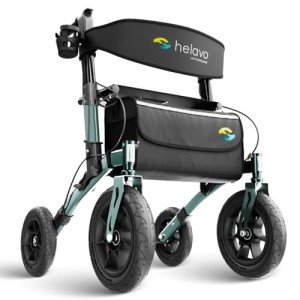The Importance of Elderly Walkers: Enhancing Mobility and Independence
As individuals age, their bodies undergo numerous modifications that might affect their mobility. Conditions such as arthritis, osteoporosis, and other persistent disorders can make browsing the environment challenging for the elderly. Fortunately, assistive gadgets like walkers can significantly boost mobility, making sure that seniors preserve their self-reliance and quality of life. This post will explore the different types of walkers offered, their advantages, and crucial factors to consider when selecting the right one.
Understanding the Different Types of Walkers
A walker can provide the necessary support for seniors having problem with mobility. However, not all walkers are created equivalent. Here's a comprehensive breakdown of the various types of walkers readily available.
| Type of Walker | Description | Best For |
|---|---|---|
| Standard Walker | A lightweight frame with four legs providing fundamental support. | People needing assistance while walking. |
| Two-Wheeled Walker | A walker with 2 wheels at the front enabling for simpler movement. | Users who need more mobile support for faster walking. |
| Four-Wheeled Walker | A rollator with four wheels, brakes, and a seat. | Active seniors who require more mobility and a place to rest. |
| Knee Walker | A specialized walker with a padded platform for resting the knee. | Individuals recovering from foot or ankle injuries. |
| Folding Walker | A walker that can be collapsed for easy storage and transport. | Seniors needing benefit when traveling. |
Table 1: Types of Walkers
Advantages of Using a Walker
Walkers offer a wide variety of benefits for seniors, consisting of:
- Enhanced Stability: Walkers give extra support to the user, helping to foster self-confidence while walking.
- Improved Balance: With a walker, seniors can redistribute their weight, improving balance and decreasing the threat of falls.
- Increased Independence: Users can walk around their homes and communities more comfortably, enabling them to participate in social activities.
- Decreased Pain: Walkers can lessen the effect on joints and muscles, making motion less agonizing for conditions like arthritis.
- Versatile Usage: Walkers appropriate for numerous environments, whether indoors, outdoors, or on irregular surfaces.
Table 2: Benefits of Using a Walker
Choosing the Right Walker
Picking the ideal walker is vital to taking full advantage of mobility and making sure convenience. Here are some factors to consider:
- Weight Capacity: Ensure that the walker can support the user's weight. The majority of walkers have a specified weight limit.
- Height Adjustment: Adjustable height features make sure that the walker is set to the proper level for the user's height, promoting good posture and comfort.
- Wheels vs. No Wheels: Depending on the user's capabilities and environment, a walker with wheels may be more advantageous for movement, while a non-wheeled walker may offer more stability.
- Additional Features: Some walkers come with integrated seats, storage, or devices (like cup holders) that can improve user experience.
Table 3: Considerations for Choosing a Walker
Upkeep of Walkers
Appropriate upkeep of walkers is vital for ensuring safety and durability. Here are some basic upkeep ideas:
- Regular Inspections: Check for cracks, rust, or loose screws and make sure that the rubber ideas on the legs are undamaged.
- Wheel Maintenance: Ensure that wheels move freely and are not stuck; lubricate them if needed.
- Adjustments: Periodically examine if the height and settings stay right, changing them as needed to preserve user convenience.
Table 4: Maintenance Tips for Walkers
Frequently Asked Questions About Elderly Walkers
1. What is Lightweight Walker of an elderly walker?
The costs of walkers can range significantly based upon the type and features. Standard walkers may cost between ₤ 50-₤ 100, while specialized walkers or rollators can range from ₤ 100 to ₤ 300.
2. Are walkers covered by insurance coverage?
Numerous insurance coverage strategies, including Medicare, cover the expense of walkers, offered they are considered medically necessary. It's crucial to contact your insurance coverage provider for specifics.
3. How do I understand when my liked one needs a walker?
Indications may include problem walking independently, regular falls or near-falls, and increased tiredness while carrying out everyday activities. A health care expert can supply a thorough assessment.
4. Can walkers be utilized outside?
Yes, many walkers can be used both inside your home and outdoors. If preparing to utilize a walker outdoors, think about a design with wheels or larger legs for stability on numerous surfaces.
5. The length of time can a walker last?
With correct maintenance, a great quality walker can last for several years, though wear and tear will vary depending upon use frequency and conditions.
Walkers are important tools that can restore mobility and self-reliance for seniors while guaranteeing their safety. As people live longer and lead active lifestyles, investing in proper assistive gadgets like walkers is more crucial than ever. Understanding the types of walkers offered, their benefits, and how to select the right one can empower users and their caregivers to make educated choices. Eventually, the right walker can lead to enhanced quality of life, enabling aging individuals to stay active individuals in their communities.

